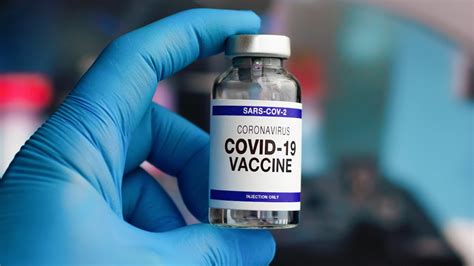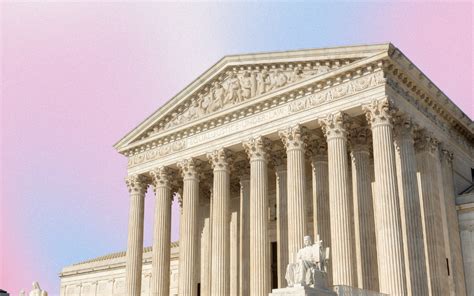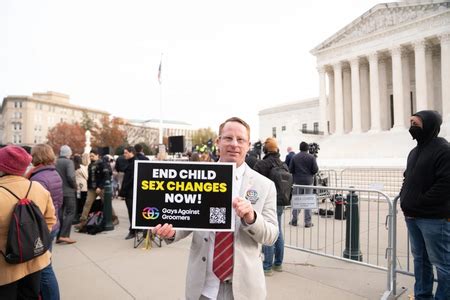
As COVID-19 vaccines transition to the commercial market, Americans could face costs as high as $200 per dose, raising concerns about accessibility and affordability, particularly for the uninsured and underinsured.
With the public health emergency declared by the White House coming to an end on May 11, COVID-19 vaccines and treatments will no longer be universally free. This shift means that insurance coverage and individual financial capacity will determine access to potentially life-saving preventative care. Experts warn this could exacerbate existing health disparities.
The Kaiser Family Foundation (KFF) estimates that the uninsured could face the full cost of the vaccine, potentially around $130 per dose, while insured individuals will likely have the cost covered by their plans, subject to co-pays and deductibles depending on their specific insurance policies. However, the exact cost remains uncertain and will be determined by manufacturers and healthcare providers.
The Biden administration has launched programs like the “Bridge Access Program” to ensure continued access to free COVID-19 vaccines for uninsured individuals. However, the long-term sustainability and reach of these programs remain a key concern.
The End of Free Vaccines and Treatments
For nearly three years, the U.S. government has purchased and distributed COVID-19 vaccines and treatments free of charge to all Americans, regardless of their insurance status. This was made possible through emergency funding allocated by Congress. However, with the expiration of the public health emergency, this system is coming to an end. Pharmaceutical companies will now sell their vaccines and treatments directly to healthcare providers and insurers, operating in a commercial market.
This transition has been anticipated for some time, and both manufacturers and the government have been preparing for it. However, the potential impact on access and affordability has raised significant concerns among healthcare advocates and policymakers.
Potential Costs and Insurance Coverage
The exact cost of COVID-19 vaccines and treatments in the commercial market is still uncertain. However, manufacturers have indicated that they expect to charge between $110 and $130 per dose. The final price could be even higher, depending on factors such as distribution costs and pharmacy markups.
For individuals with health insurance, the cost of the vaccine will likely be covered by their plan, as preventative services are generally covered without cost-sharing under the Affordable Care Act (ACA). However, there may be exceptions, particularly for individuals with high-deductible health plans or those who receive the vaccine out-of-network.
The biggest concern is for the uninsured, who will likely have to pay the full cost of the vaccine out-of-pocket. This could create a significant barrier to access, particularly for low-income individuals and families.
Government Programs to Ensure Access
Recognizing the potential for disparities in access, the Biden administration has launched several programs to help ensure that COVID-19 vaccines and treatments remain available to everyone, regardless of their ability to pay.
The “Bridge Access Program” is a key component of this effort. This program will provide free COVID-19 vaccines to uninsured adults through a network of participating pharmacies and healthcare providers. The program is funded by the Centers for Disease Control and Prevention (CDC) and will operate until supplies are exhausted.
The administration has also worked to ensure that COVID-19 vaccines and treatments are included in the Vaccines for Children (VFC) program, which provides free vaccines to children from low-income families.
These programs are intended to mitigate the impact of the commercial transition on access to COVID-19 vaccines and treatments. However, their long-term effectiveness and sustainability remain to be seen.
Concerns and Challenges
Despite the government’s efforts, there are still concerns about the potential for disparities in access to COVID-19 vaccines and treatments. One major challenge is ensuring that individuals are aware of the available programs and how to access them.
Another challenge is the potential for confusion and complexity in the insurance coverage landscape. As COVID-19 vaccines and treatments are integrated into the commercial market, it may become more difficult for individuals to understand what is covered by their insurance plan and what they will have to pay out-of-pocket.
Healthcare advocates are also concerned that the transition to a commercial market could lead to higher prices for COVID-19 vaccines and treatments, which could further limit access, especially if future formulations are required to combat emerging variants. They argue that the government should continue to play a role in ensuring that these essential medical products are affordable and accessible to everyone.
The Role of Manufacturers
Pharmaceutical companies have a key role to play in ensuring equitable access to COVID-19 vaccines and treatments. They can do this by offering tiered pricing for different markets, providing discounts to low-income countries, and working with governments and non-profit organizations to ensure that vaccines and treatments are available to those who need them most.
Some manufacturers have already announced plans to offer patient assistance programs to help individuals who cannot afford the cost of the vaccine. However, the details of these programs are still being developed, and it remains to be seen how effective they will be in reaching those who need them most.
Long-Term Implications
The transition to a commercial market for COVID-19 vaccines and treatments has significant implications for the future of public health. It raises questions about the role of government in ensuring access to essential medical products and the balance between market forces and public health goals.
Some experts argue that the government should continue to play a more active role in regulating the price of vaccines and treatments, particularly during public health emergencies. Others argue that market forces are the most efficient way to allocate resources and that government intervention can stifle innovation.
The debate over the future of COVID-19 vaccine and treatment access is likely to continue for some time. As the pandemic evolves, policymakers and healthcare stakeholders will need to adapt their strategies to ensure that everyone has access to the tools they need to protect themselves and their communities.
Expert Opinions
Healthcare experts are divided on the potential impact of the commercial transition. Some believe that it will lead to increased innovation and efficiency, while others fear that it will exacerbate existing health disparities.
“The transition to a commercial market for COVID-19 vaccines and treatments is a significant step, and it’s important that we get it right,” said Dr. Amesh Adalja, a senior scholar at the Johns Hopkins Center for Health Security. “We need to ensure that everyone has access to these essential medical products, regardless of their ability to pay.”
“We have to make sure we protect the vulnerable,” KFF’s Cox said. “We have to make sure that people who are uninsured can still get access to these vaccines.”
FAQ: COVID-19 Vaccine Costs and Access After the Public Health Emergency
-
How much will the COVID-19 vaccine cost after the public health emergency ends?
The exact cost is still uncertain, but manufacturers estimate prices between $110 and $130 per dose. The final price may vary depending on factors such as distribution costs and pharmacy markups. Some reports suggest the price could rise to $200. Quote from source: Not directly quoted, but information derived from the article’s discussions on manufacturer estimates.
-
Will my insurance cover the COVID-19 vaccine?
If you have health insurance, your plan will likely cover the cost of the vaccine as a preventative service, generally without cost-sharing, per the Affordable Care Act (ACA). However, check your specific plan details, as there may be exceptions for high-deductible plans or out-of-network providers. Quote from source: Not directly quoted, but information derived from the article’s discussions on insurance coverage.
-
What if I am uninsured? How can I get a free COVID-19 vaccine?
The Biden administration has launched the “Bridge Access Program” to provide free COVID-19 vaccines to uninsured adults through participating pharmacies and healthcare providers. Additionally, COVID-19 vaccines are included in the Vaccines for Children (VFC) program for eligible children from low-income families. Quote from source: Referenced from the discussion of the “Bridge Access Program”.
-
Where can I find a participating pharmacy or healthcare provider for the “Bridge Access Program”?
Details on participating locations are not yet readily available. Check with your local health department or visit the CDC website for updated information and a list of participating providers as the program rolls out. Quote from source: Not directly quoted, but inferred from the information of the program.
-
Will COVID-19 treatments like Paxlovid also cost money now?
Yes, similar to the vaccines, COVID-19 treatments will also transition to the commercial market. Insured individuals will likely have coverage through their plans, but the uninsured may face the full cost, although patient assistance programs and government initiatives could provide support. Quote from source: Not directly quoted, but inferred from the general discussion of treatments.
Detailed Breakdown of the Changes and Potential Implications
The sunsetting of the COVID-19 public health emergency marks a significant shift in how the U.S. manages the virus, transitioning from a government-funded, universally accessible model to a commercialized system. This transition, while expected, introduces complexities and potential pitfalls that require careful consideration to prevent exacerbating existing health inequities.
Historical Context: Government-Funded Vaccine Distribution
Since the early stages of the pandemic, the U.S. government has played a pivotal role in ensuring access to COVID-19 vaccines and treatments. Through Operation Warp Speed and subsequent funding allocations, the government procured vast quantities of vaccines from manufacturers like Pfizer-BioNTech, Moderna, and Johnson & Johnson. These vaccines were then distributed to states, territories, and tribal nations at no cost to recipients. This approach was instrumental in rapidly vaccinating a large portion of the population and mitigating the severity of the pandemic’s impact.
The government’s involvement extended beyond vaccine procurement and distribution. It also invested heavily in public awareness campaigns to promote vaccination and counter misinformation. This multifaceted approach helped to build confidence in the vaccines and encourage widespread adoption.
The Shift to a Commercial Market: What Changes?
With the end of the public health emergency, the government’s role in directly funding and distributing COVID-19 vaccines and treatments will diminish. Pharmaceutical companies will now be responsible for selling their products directly to healthcare providers, pharmacies, and insurers. This shift introduces several key changes:
- Pricing: Manufacturers will have greater autonomy in setting prices for their vaccines and treatments. While competition among manufacturers may help to moderate prices, there is also the potential for prices to increase, particularly if demand remains high or if new, more effective vaccines are developed.
- Distribution: Healthcare providers and pharmacies will need to establish contracts with manufacturers and manage their own vaccine and treatment inventories. This could create logistical challenges, particularly for smaller providers who may not have the resources to negotiate favorable contracts or manage complex supply chains.
- Insurance Coverage: Health insurance plans will be responsible for covering the cost of COVID-19 vaccines and treatments, subject to their standard cost-sharing provisions. This means that individuals with high-deductible health plans or those who receive care out-of-network may face significant out-of-pocket expenses.
- Access for the Uninsured: The uninsured will face the greatest challenges in accessing COVID-19 vaccines and treatments. Without insurance coverage, they will likely have to pay the full cost of these products, which could be a significant financial barrier.
The “Bridge Access Program”: A Safety Net for the Uninsured
Recognizing the potential for disparities in access, the Biden administration has launched the “Bridge Access Program” to provide free COVID-19 vaccines to uninsured adults. This program is a crucial safety net for those who would otherwise be unable to afford the vaccine. However, several factors will determine the program’s effectiveness:
- Reach: The program’s success will depend on its ability to reach a large number of uninsured individuals. This will require effective outreach and enrollment efforts, as well as a network of participating providers that is accessible to people in all geographic areas.
- Sustainability: The program is currently funded by the CDC, but its long-term sustainability is uncertain. Continued funding will be necessary to ensure that the program can continue to provide free vaccines to the uninsured in the years to come.
- Awareness: The public needs to be made aware of the existence and availability of this program. Without proper education and outreach, many who qualify may not benefit.
The Role of Vaccines for Children (VFC) Program
The inclusion of COVID-19 vaccines in the Vaccines for Children (VFC) program is another important step in ensuring equitable access. The VFC program provides free vaccines to children from low-income families, helping to protect them from preventable diseases. By including COVID-19 vaccines in the VFC program, the government is ensuring that all children, regardless of their family’s income, have access to this important preventative measure.
Potential Challenges and Concerns
Despite these efforts, several challenges and concerns remain regarding the transition to a commercial market for COVID-19 vaccines and treatments:
- Cost Barriers: Even with insurance coverage, some individuals may face significant cost barriers to accessing COVID-19 vaccines and treatments. High deductibles, co-pays, and out-of-network costs could deter some people from seeking care, particularly those with limited financial resources.
- Administrative Complexity: The transition to a commercial market could create administrative complexity for healthcare providers and insurers. They will need to navigate new billing and reimbursement processes, which could lead to delays in access and increased costs.
- Misinformation and Hesitancy: Misinformation about COVID-19 vaccines continues to circulate, and vaccine hesitancy remains a significant challenge. The transition to a commercial market could exacerbate these issues, as some individuals may be more skeptical of vaccines that are sold for profit.
- Variant-Specific Boosters: The need for variant-specific booster shots could add to the cost burden, as individuals may need to pay for additional doses to maintain their immunity.
- Uneven Distribution: There is a risk that COVID-19 vaccines and treatments will not be distributed equitably across different geographic areas and populations. Rural areas and underserved communities may face challenges in accessing these products, which could further exacerbate health disparities.
The Importance of Continued Monitoring and Adaptation
The transition to a commercial market for COVID-19 vaccines and treatments is a complex and evolving process. It is essential that policymakers and healthcare stakeholders continue to monitor the situation closely and adapt their strategies as needed. This includes:
- Monitoring access and affordability: Regular monitoring of access and affordability is crucial to identify any emerging disparities and inform policy interventions.
- Addressing misinformation: Continued efforts to counter misinformation and promote vaccine confidence are essential to ensure that people have accurate information about the benefits and risks of vaccination.
- Strengthening public health infrastructure: Investing in public health infrastructure is critical to ensure that communities have the resources they need to respond to future public health emergencies.
- Promoting international collaboration: International collaboration is essential to ensure that COVID-19 vaccines and treatments are available to all countries, particularly low-income countries.
The Future of COVID-19 Management
The transition to a commercial market for COVID-19 vaccines and treatments represents a significant shift in how the U.S. manages the virus. While this transition presents challenges, it also offers opportunities to improve the efficiency and sustainability of the healthcare system. By carefully monitoring the situation and adapting their strategies as needed, policymakers and healthcare stakeholders can ensure that everyone has access to the tools they need to protect themselves and their communities from COVID-19. The long-term success of this transition will depend on a commitment to equity, transparency, and collaboration. It requires a multi-pronged approach involving government, pharmaceutical companies, healthcare providers, and community organizations to ensure that the gains made in combating the pandemic are not reversed. The coming months will be critical in determining whether this transition can be managed effectively and whether the U.S. can continue to make progress in controlling the virus.









